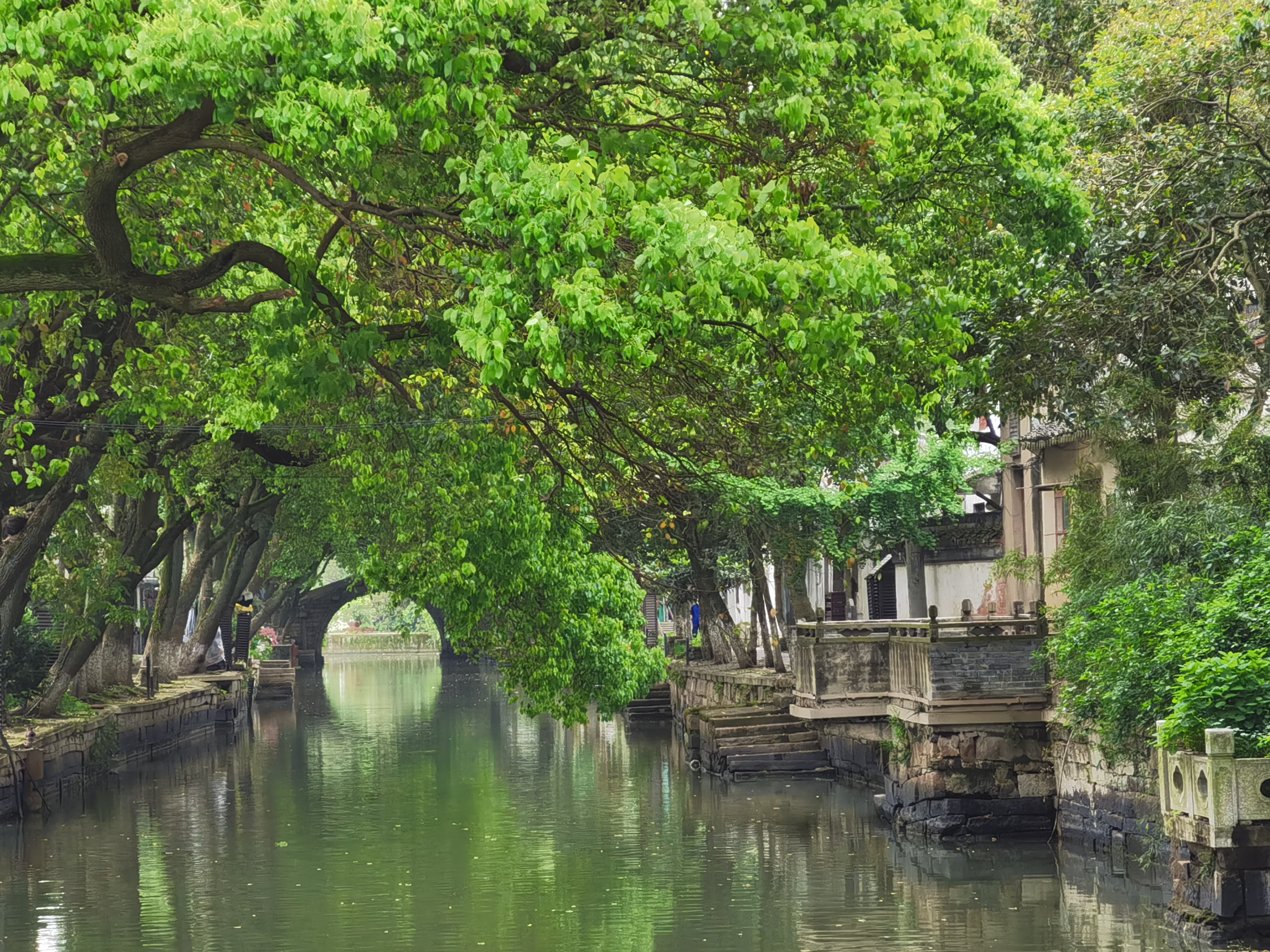Editor's note: Tourism is booming in China. Every April, picturesque water towns and historic blocks in its southern and eastern regions become popular tourist destinations. To understand how historic towns empower China's tourism industry, CGTN presents "Old Town, New Life," a series that tells fresh stories of well-preserved old towns, and shows how younger generations reshape their culture.
For Jin Zhen, little has changed in the layout of her hometown Tongli for decades. The rivers are still flowing, the small stone bridges and the old houses on the banks are just as they were. However, the biggest change is that more tourists are coming.
Located in Wujiang District of Suzhou City, east China's Jiangsu Province, the water town of Tongli boasts a history of over 1,000 years. Many buildings in the town were built centuries ago, and over 70 percent of the buildings in the town are still inhabited by residents.
Jin, 38, works as a tour guide in Tongli. She said most of the people who live here now are elderly. "My grandparents still live here," said Jin. "The elderly people prefer the quietness here. And they don't want to leave their old friends and neighbors."
Zhang Jinjun, an official of the Wujiang District Natural Resources and Planning Bureau, introduced that there are about 12,000 local people living in the town's protected area, which spans one square kilometer.
"It is both a scenic spot and a community," said Zhang, noting that it presents a lively piece of the local history and culture.
To better protect the water town culture in Tongli, Zhang said local authorities fully respect the needs of residents, and continuously improve the living environment without harming its architectural style.
In the long run of its history, Tongli was famed for its achievements in imperial examinations and has produced well-known Confucians. Its scenic spot, Tuisi Garden, meaning a garden for retreat and reflection, was listed as a world cultural heritage site by UNESCO in 2000. The garden is an example of how Chinese people incorporate water, mountains, trees and other natural elements into their daily life.

A distant view of a stone bridge in Tongli Town, Wujiang District of Suzhou City, east China's Jiangsu Province, April 20, 2024. Du Junzhi/CGTN
About 40 percent of Tongli's area is covered by water. Fifteen rivers criss-cross the town and divide it into seven parts, but 49 bridges connect them again, creating various amazing views. As one of the top 10 historic towns in China, the preservation work in Tongli began in the 1980s and tourists began to arrive in the 1990s.
"When I was little, the town was really quiet and peaceful," Jin said, adding that more tourists and shops appeared with the development of tourism.
Born and raised in Tongli, Jin still remembers how she helped tourists find scenic spots when she was a primary school student.
"At that time, my parents joked that I could be a tour guide when I grew up, and I [became] one," laughed Jin, who didn't leave the town until she got married. She said she has witnessed how the tourism industry thrived in Tongli in the past decades.
While most young people in Tongli are seeking career prospects in the urban area of Suzhou City, some have tried their luck in the tourism sector by opening home-stay hotels or coffee shops in Tongli in recent years.
"For the local residents living in the town, they love the local life style from the bottom of their hearts," said Zhou Chunhua, director of the Wujiang District Cultural Relics Protection and Management Institute.
Zhou said that Tongli has the highest number of cultural relics in Wujiang District, with two of them ranking as national key cultural relics. Currently, the small town has 114 immovable cultural relics.
"The local authorities have taken great efforts to protect cultural relics," Zhou said, adding that financial and technical support will also be provided to protect cultural relics of lower levels in the near future.
Editor Ⅰ: Zhang Wenwen
Editor Ⅱ: Wu Dan
Editor Ⅲ: Liu Guosong














